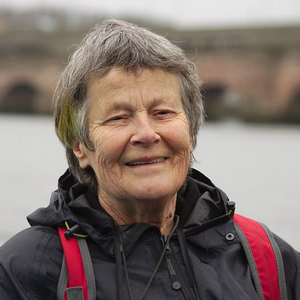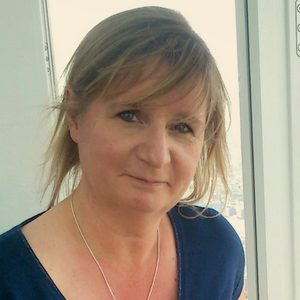Dinah Murray Remembered
Joseph Long
Dinah Murray 1946 - 2021
In July of last year we, at Scottish Autism, were saddened to learn of the death of Dr Dinah Murray, an energetic and fierce champion of autistic rights for many years. Dinah’s work as a practitioner, researcher and advocate has been influential across the UK and beyond. Her legacy will be felt for years to come.
Dinah’s knowledge of autism and autistic people drew on her own lived experience, and her experience as a parent, but it was also formed over several decades as a support professional. Her work was crucial in this regard as she spoke and wrote in a way that resonated with both autistic people and practitioners alike. Such catalysts are vital in building a shared understanding of how autistic people who rely on services can be better empowered and enabled to lead the lives of their choosing.
Dinah’s work included campaigning against the abuse of narcoleptic drugs being prescribed to autistic people and advocating for the use of technology in supporting autistic communication. She taught generations of students on Birmingham University’s online autism courses, many of whom were support professionals. Several of Scottish Autism’s practitioners and managers experienced Dinah’s thoughtful teaching there. In 2005 Dinah, together with Wenn Lawson and Mike Lesser, authored an influential paper on monotropism and attention in autism, discussed in more depth below. The paper was the culmination of Murray’s thinking on this topic over the previous decade. The theory has gained further ground in recent years and formed the basis of a memorable event at the Participatory Autism Research Collective’s fringe event during Scottish Autism’s 50th Anniversary Conference in 2018.
In 2017 the Shirley Foundation’s ‘National Autism Project’ sought to investigate the effectiveness of current autism supports and interventions. After being asked to join the project team, Dinah brought in a panel of autistic advisors to contribute. Following publication of the project’s report, The Autism Dividend, that panel became the National Autistic Task force (NAT). NAT is made up entirely of autistic professionals and advocates. NAT’s An Independent guide to quality care for autistic people provides a valuable framework for specialist support provision and Scottish Autism frequently signpost professionals and policy-makers to the guide.
In Spring 2019 Scottish Autism invited the National Autistic Taskforce to a ‘challenge session’ to review Scottish Autism’s Ethical Practice framework and our ‘Values into Practice’ practitioner learning programme. Gaining the critical engagement of autistic professionals was vital to developing the programme, as Charlene Tait recounts:
“Dinah was part of a team from the National Autistic Taskforce who led a challenge session on our practice model. It was one of the most formative experiences that I have had and I valued and appreciated Dinah’s sharp insight and support to enable and challenge us to be the best we can be.”
We are delighted that the National Autistic Taskforce are currently advising Scottish Autism on improving autistic inclusion in our governance structures and processes along with two other Autistic People’s Organisations: Autism Rights Group Highland (ARGH) and Autistic Mutual Aid Society Edinburgh (AMASE).
Dinah was passionate about the need for appropriate communication support for autistic people – the focus of a recent research project at the University of Kent’s Tizard Centre. In what proved to be her final years Dinah championed a project known as ‘AutNav’. The project comprises development of an app through which autistic people can easily access preferred content, apps, and communication tools on the internet. Through use of a clear and accessible interface, supported people have maximum autonomy to navigate the internet, follow their interests, and communicate with the important people in their lives. The app isbeing developed by Passio and Scottish Autism has been honoured to facilitate this project and be involved in user testing. The app will add to Dinah’s impressive legacy.
We pay tribute to Dinah’s incredible life advocating for the rights of autistic people as well as providing professionals with the tools and insights to better realise those rights. Her wisdom and energy will be greatly missed.
Dinah Murray and Monotropism
One of Dinah Murray’s most lasting legacies is likely to be the theory of monotropism in autistic thinking. In 2005 Murray, together with Lesser and Lawson, published a paper entitled ‘Attention, monotropism and the diagnostic criteria for autism’ in the journal Autism.
The paper is significant in that it moves away from deficit-based descriptions of ‘executive dysfunction’, ‘weak central coherence’ or the ‘restricted and repetitive interests and behaviours’ found in diagnostic criteria to instead describe the ‘attention tunnel’ experienced by autistic people as monotropism. Monotropism explains ‘atypical patterns of attention’ described among autistic people as a preference for a ‘tight focus’ of attention over the ‘distributed’ attention, or wide focus, more commonly found in non-autistic people.
According to the theory, this attentional style explains why sudden task-switching, dealing with unanticipated change, following rapidly occurring social cues, or finding the capacity to engage in communication whilst focus is elsewhere may be difficult for autistic people. Indeed, the authors suggest that the continuous engagement with one’s own focus of interest may explain why some autistic people do not come to share in the common communication styles and cultural reference points outside of that focus. However, the monotropism theory also acknowledges the strengths and accomplishments that may come from such sustained focus. Moreover, Murray et al. describe that since this ‘intense engagement’ is most likely to coalesce around tasks and interests most meaningful to an autistic person, it may also bring great joy and satisfaction. The latter insight is particularly crucial for support practice that seeks to enable autistic people’s wellbeing, rather than pushing normative models of behaviour.
Crucially, the theory frames these patterns of attention in a way that reflects the subjective experience of autistic people, including that of the authors – a reason for the monotropism theory’s growing popularity with the autistic community.
For the original paper on monotropism see Dinah Murray, Mike Lesser, and Wendy Lawson. ‘Attention, Monotropism and the Diagnostic Criteria for Autism’. Autism 9, no. 2 May 2005): 139–56.
For a recent reflection on monotropism see also the piece by Fergus Murray for the British Psychological Society on the work of their mother: Me and Monotropism: a unified theory of autism. The piece reflects upon how thinking about monotropism has developed since the 2005 paper was published.




